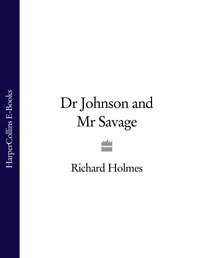
Полная версия
Southey on Nelson: The Life of Nelson by Robert Southey
10
Finally the process of writing lead Southey to revise many of his erstwhile political opinions, and his views of British Government policy in the Mediterranean, particularly where Nelson had been involved in Corsica, Sardinia, and Naples. He also came to reflect on the whole notion of patriotic ‘duty’, which is not merely the subject of Nelson’s famous Trafalgar signal, but is a powerful theme running through the whole biography, affecting not only Nelson’s career but also his love affair.
Here, paradoxically, the poet Southey, driven all his life by his own demons of duty and principle, discovered a profound sympathy for the patriot Nelson and his compulsive loyalties. It also forced the one-time disaffected radical to reconsider the meaning of English patriotism itself. In his final chapters Southey produced some of the finest, and most unexpected passages of Romantic English nationalism ever written. They were perhaps consciously intended to echo and even rival Shakespeare’s Henry V.
The death of Nelson was felt in England as something more than a public calamity; men started at the intelligence, and turned pale, as if they had heard of the loss of a dear friend. An object of our admiration and affection, of our pride and of our hopes, was suddenly taken from us; and it seemed as if we had never until then known how deeply we loved and revered him…He has left us, not indeed his mantle of inspiration, but a name and example which are at this hour inspiring hundreds of the youth of England–a name which is our pride, and an example which will continue to be our shield and our strength.
Shortly before publication in spring 1813, Southey began to feel more confident about the book. In January he wrote to his old friend Walter Scott, a rival poet of verse romances, who was also turning to prose in the shape of historical novels. He described his biography with a touch of pride as ‘a subject not self-chosen, and out of my way, but executed con amore.’
To his uncle and literary patron, Herbert Hill, he wrote in February, repeating the cautionary image of the cat walking among crockery. But now he added: ‘if I have succeeded in making the narrative continuous and clear–the very reverse of what it is in the Lives before me–the materials are, in themselves, so full of character, so picturesque, and so sublime, that it cannot fail of being a good book.’
The reviewers agreed with him. They found the book timely, well-written and surprisingly free from hagiography. They praised the ‘vigorous, plain narrative’ (The British Critic), and the intensely gripping battle scenes, ‘minute in detail, admirable in execution’ (The Eclectic Review). They also approved of the measured handling of Nelson’s character. ‘The author is not so dazzled by the glory of Lord Nelson as to be blind to his defects’, wrote The Critical Review. ‘Mr Southey has an eagle’s–or rather perhaps he would wish us to say–a poet’s eye: and he has ventured to look fully and fixedly upon the sunny radiance of Nelson’s fame, and hath both seen and marked the blots of infirmity, by which it was partially obscured.’ They all agreed that Southey had correctly identified the two great controversies of Nelson’s career–Naples and Lady Hamilton—and had thereby set the pattern for all subsequent biography.
Young Lord Byron, whose taste reflected the sharpest fashion of the day, made a point of reading Nelson as soon as it appeared, and meeting its author on one of his rare visits to London for its publication. Having mocked Southey’s verses, he was surprised by what he found in the flesh. ‘The best-looking bard I have seen for some time. His appearance is Epic; he is the only existing entire Man of Letters…His prose is perfect…His Nelson is beautiful.’
Another potentially hostile critic, William Hazlitt, who detested Southey’s shift in political beliefs, also made an exception for Nelson, and the way it was written. ‘His prose style is plain, clear, pointed, familiar, perfectly modern in texture, but with a grave and sparkling admixture of archaisms in its ornaments and occasional phraseology. He is the best and most natural prose-writer of any poet of the day: we mean that he is far better than Lord Byron, Mr Wordsworth, and Mr Coleridge for instance.’ (The Spirit of the Age)
By 1813 the immediate cult of Nelson was fading, and Wellington’s star was rising. So at first the book found its general readers slowly, but steadily enough. It was published in the same year as Pride and Prejudice, and Jane Austen herself said she was bored with books about Nelson unless they mentioned her brother. The first edition of 3,000 copies (quite large for its day) was reprinted later that summer. A third edition appeared in 1814, and after a long gap, a fourth edition in 1827, largely to incorporate the new Lady Hamilton materials. This was the last that Southey seriously revised.
However the fortunes of the biography, and the perceptions of the kind of book it was, changed radically in 1830. This followed a full-scale retrospective of all Southey’s work by Thomas Macaulay in the Edinburgh Review for January, 1830. Macaulay singled out Nelson as the finest thing Southey had ever written, destined to endure longer than any of his poetry, and to be read more widely than any of his multi-volume histories. But in doing this, he overlooked all the controversial themes Southey had so carefully explored, and ignored the complex Romantic portrait he had achieved of Nelson.
Instead Macaulay relaunched the biography as a gripping adventure story of a Boy’s Own hero: the literary equivalent of a patriotic Victorian pub sign. Given all Southey’s initial doubts, and his subsequent meticulous researches, his anxieties about Nelson and Lady Hamilton, and his concerns about Naples, it was a supremely ironic outcome. ‘No writer, perhaps, ever lived, whose talents so precisely qualified him to write the history of the great naval warrior,’ boomed Macaulay. There were no fine riddles of the human heart to read–no theories to found–no hidden causes to develop–no remote consequences to predict. The character of the hero lay on the surface. The exploits were brilliant and picturesque…it was an exact hit between wind and water.’
After this brassy endorsement, the book quickly became a bestseller, and then a Victorian classic. The young Queen herself was reported to have adored the Nelson story–as a girl. New editions appeared in 1830,1831, and in 1840, the year of Southey’s own death. There were more than a hundred editions by the end of the century. In America it was issued as a standard manual to all naval cadets, rather as John Murray had originally foreseen.
At the same time Victorian naval scholars, starting with the great Sir Harris Nicolas and his mighty edition of Nelson’s Dispatches (1844-6), began firmly to set Southey aside as a children’s book, no longer relevant to serious readers. This marginalising work was completed by Professor Geoffrey Callender’s highly critical annotated edition of 1922, which page by page, and footnote by footnote, picked minute holes in Southey’s understanding of everything from flags and knots, to navigation and international diplomacy. Yet strangely enough, even Cal-lender ended by observing that ‘the Nelson whom we know today is almost as truly Southey’s as Henry the V and Richard the III are Shakespeare’s’.
11
To his great surprise, the biography immediately made Southey’s own career. Its patriotism caught a public mood, and he was offered the Poet Laureateship that autumn (on the generous recommendation of Walter Scott). His position with his publishers and the Quarterly Review was assured, and Murray later urged him to write Lives of two other notable warriors, first the Duke of Wellington, and then the Duke of Marlborough. He wrote extended essays on both for the Quarterly, as he had with Nelson; but finally–and perhaps wisely–he turned down both ideas—in Wellington’s case with the pointed comment that biographies of living persons were impertinent. He did however write an enormous, erudite and worthy three volume History of the Peninsular War (1823—1832), which has sunk without trace.
To the end of his career, Southey remained intrigued by the more introspective aspects of the form, and what biography could tell us about an inner life. He later wrote long and thoughtful Lives of John Wesley (1820), John Bunyan (1830), and the poet William Cowper (1835). They have striking passages, such as the moment when the boy Wesley is dramatically–and symbolically–saved from a house fire, ‘a brand plucked from the burning’. Yet none of them have the narrative flair and the instinctive passion of his portrait of Nelson, whom he once described in an inspired moment truly worthy of a Poet Laureate, as ‘the hero, the darling hero of England’.
SELECT CHRONOLOGY
1758 (29 September) Horatio Nelson born at Burnham Thorpe, Norfolk
1774 Robert Southey born in Bristol
1771 Nelson joins the Royal Navy as a midshipman at Chatham
1773 Nelson sails to the Arctic
1777 Nelson sails to the West Indies
1787 Nelson marries Mrs Fanny Nisbet on Nevis, in the British Caribbean
1788 Nelson retires to Norfolk on half-pay
1792 Southey goes to Oxford University
1793 (January) Nelson given command of HMS Agamemnon (September) Nelson first meets Emma Hamilton at Naples
1794 (July) Nelson loses sight of right eye while besieging Calvi, Corsica
1795 Southey lectures with Coleridge in Bristol
1796 Southey sails to Spain
1797 (February) Nelson ‘breaks the line’ at the Battle of Cape St Vincent (July) Nelson loses right arm at Santa Cruz
1798 (August) Nelson wins the Battle of the Nile (Aboukir Bay) Southey publishes his ballads, ‘The Inchscape Rock’ and ‘The Battle of Blenheim’
1799 Nelson in Naples with Emma Hamilton Execution of Caraccioli, and Neapolitan ‘rebels’
1800 Nelson separates from Lady Nelson
1801 (April) Nelson disobeys orders at the Battle of Copenhagen
Nelson’s illegitimate daughter, Horatia, born Southey publishes Thalaba, the Destroyer
1803 (June) Nelson takes command of the Mediterranean fleet
Southey moves to the Lake District
1805 (August) Nelson’s last summer in England with Emma and Horatia
(15 October) Nelson dies at the Battle of Trafalgar
1810 Southey begins publishing his History of Brazil Southey reviews several Nelson biographies for The Quarterly
1813 Southey publishes The Life of Nelson Southey appointed Poet Laureate
1815 Emma Hamilton dies in Calais
1820 Southey publishes The Life of John Wesley
1833 Southey publishes his Lives of the British Admirals
1843 Southey dies in Keswick, Cumberland
AUTHOR’S PREFACE
Many lives of Nelson have been written: one is yet wanting, clear and concise enough to become a manual for the young sailor, which he may carry about with him till he has treasured up the example in his memory and in his heart. In attempting such a work I shall write the eulogy of our great Naval Hero; for the best eulogy of NELSON is the faithful history of his actions; the best history, that which shall relate them most perspicuously.
ROBERT SOUTHEY
Конец ознакомительного фрагмента.
Текст предоставлен ООО «ЛитРес».
Прочитайте эту книгу целиком, купив полную легальную версию на ЛитРес.
Безопасно оплатить книгу можно банковской картой Visa, MasterCard, Maestro, со счета мобильного телефона, с платежного терминала, в салоне МТС или Связной, через PayPal, WebMoney, Яндекс.Деньги, QIWI Кошелек, бонусными картами или другим удобным Вам способом.










